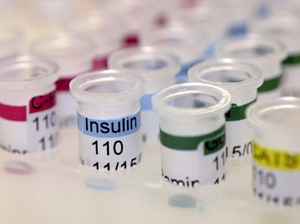
© 2010 iStockphoto.com/Neil Brake
Type 2 diabetes is a metabolic disorder characterized by high blood glucose levels. Two hormones, secreted by the pancreas, are responsible for regulating the level of blood glucose in the human body. These hormones are insulin, which is released in response to high blood glucose to stimulate glucose uptake in the liver and muscle and so lower blood glucose levels, and glucagon, which is secreted at low blood glucose levels to increase glucose production from the liver and so restore normal blood glucose levels. It is commonly accepted that type 2 diabetes is the result of reduced insulin secretion from the pancreas and impaired insulin sensitivity in peripheral metabolic organs. Several studies have reported an association between elevated glucagon secretion and type 2 diabetes, but this is generally interpreted as a consequence, rather than a cause, of diabetes.
Weiping Han and co-workers at the A*STAR Singapore Bioimaging Consortium now have evidence that dysregulated glucagon secretion, or the lack of inhibition of glucagon secretion in the presence of high blood glucose levels, plays an important role in the development of type 2 diabetes. The researchers studied what would happen when they fed a high-fat diet to normal mice and to genetically modified ‘knockout’ mice with impaired glucose tolerance, reduced insulin secretion and almost no glucagon secretion. A high-fat diet is known to reduce insulin sensitivity in mice. As the knockout mice had impaired insulin secretion, it was predicted that they would develop high blood glucose levels sooner than the control mice after high-fat feeding.
The biggest surprise was that the control mice had developed high blood glucose, whereas the knockout mice had not. This finding is extremely important because it shows that reduced insulin secretion and sensitivity may not be sufficient to cause high blood glucose; dysregulated glucagon secretion is also needed.
Glucagon and insulin are synthesized by alpha and beta cells, which reside in islets of endocrine cells in the pancreas. Most studies have been devoted to the study of beta cells because of the traditional view that insulin deficiency is the cause of type 2 diabetes, and insulin maintenance has conventionally been the method of choice for controlling diabetes.
“Our findings demonstrate that diabetes is a bi-hormonal disease. A better understanding of alpha cells and glucagon secretion regulation may help uncover new therapeutic targets for the treatment of type 2 diabetes,” says Han. “In addition to promoting glucose-dependent insulin secretion and peripheral insulin sensitivity, maintenance of glucagon secretion control might help prevent and treat type 2 diabetes.”
The A*STAR-affiliated researchers contributing to this research are from the Singapore Bioimaging Consortium.



